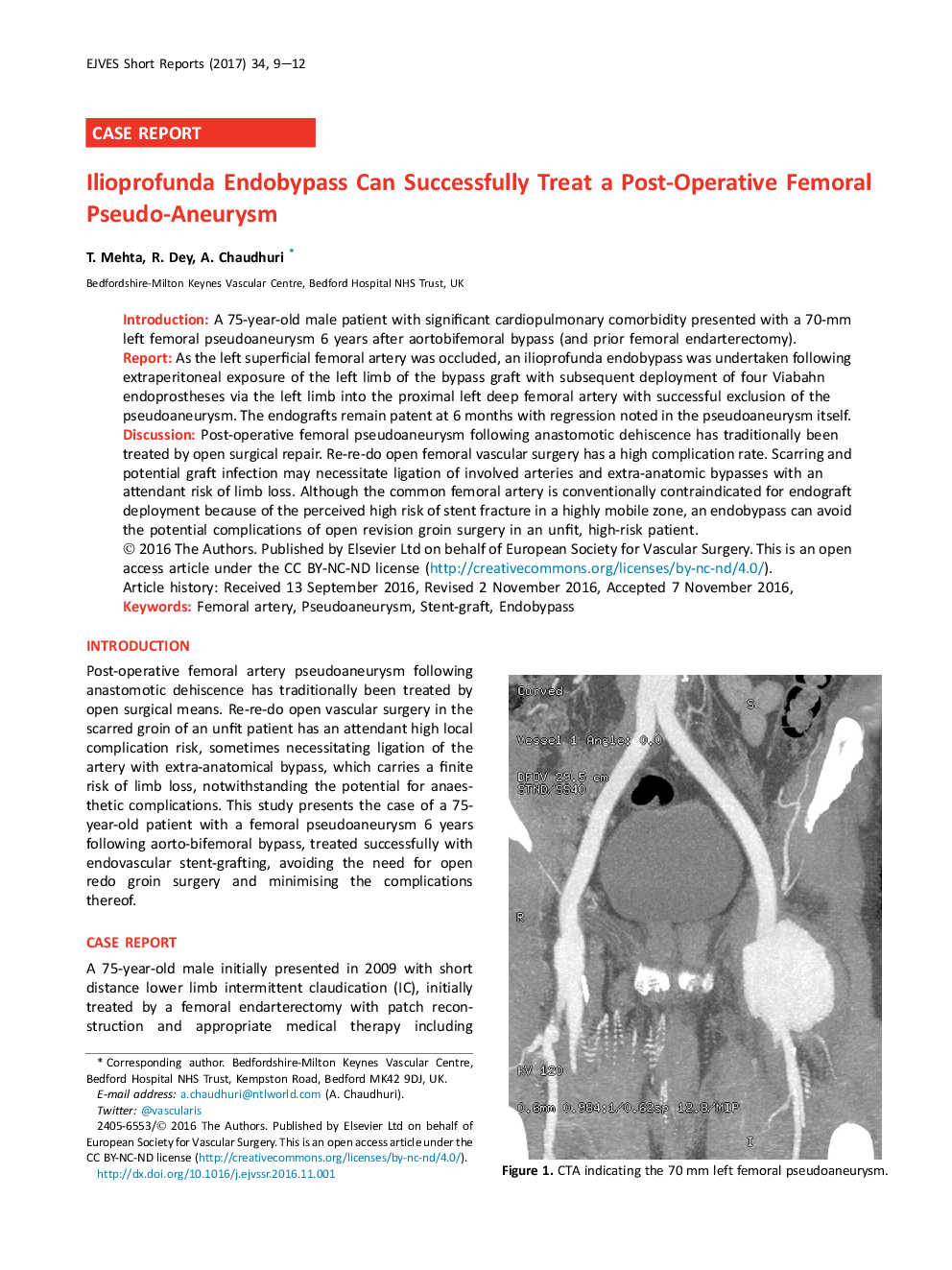| Article ID | Journal | Published Year | Pages | File Type |
|---|---|---|---|---|
| 8659239 | EJVES Short Reports | 2017 | 4 Pages |
Abstract
Post-operative femoral pseudoaneurysm following anastomotic dehiscence has traditionally been treated by open surgical repair. Re-re-do open femoral vascular surgery has a high complication rate. Scarring and potential graft infection may necessitate ligation of involved arteries and extra-anatomic bypasses with an attendant risk of limb loss. Although the common femoral artery is conventionally contraindicated for endograft deployment because of the perceived high risk of stent fracture in a highly mobile zone, an endobypass can avoid the potential complications of open revision groin surgery in an unfit, high-risk patient.
Related Topics
Health Sciences
Medicine and Dentistry
Cardiology and Cardiovascular Medicine
Authors
T. Mehta, R. Dey, A. Chaudhuri,
